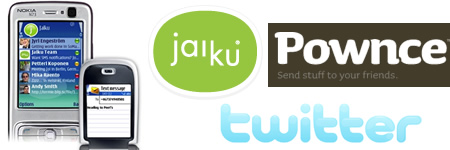

The competition between Google and Microsoft has been huge in the news recently. While it seems that the debate is centered on online advertising sales, there is a bigger rivalry going on that fuels this: Google has been trying to complete with Microsoft software for a few years now. Gmail was one of the first attempts, but they also jumped into the game when the rolled out Google Docs and Spreadsheets (now expanded to included PowerPoint-like Presentations).
Google is not the only company yo do this. Several companies have created online alternatives to Microsoft Office products. These websites use programming tricks to mimic several key functions of Word, Excel, PowerPoint, Outlook, and other Office products. Google Docs is probably the most well known. Zoho is probably the most comprehensive, with a large range of tools that other sites don’t have. Other sites, like Buzzword, are trying to start other alternatives. All of these sites offer basic Office-like functionality online. In time, they all claim that they will be able to mimic all Office features online.
There are several benefits and pitfalls to these attempts. The main pitfall is that your documents will probably exist online, and if you are cut off from the Internet – no access to your work. I say “probably” because Zoho has actually developed a service (based on Google Gears, actually) that gives you the ability to save your work off line, work on it while disconnected, and then upload it whenever you connect. Also, if you are one of the few that really, really use those obscure Office features that haven’t been re-created online yet, you might really hate not being able to use them.
The benefits of using an online publishing MS Office alternative are numerous. Any of the sites mentioned above will give you a list of these benefits. The main one that I like is that you can collaborate with others online, in real time (sometimes), on the same document. No more emailing back and forth copies of work, only to have someone start working on the older version because they forgot to open the latest email. You can also open your work up to any collaborators that you choose, or share the final product with the world.
The lightweight nature of the programming used in most of these websites means that they also work great on Mobile devices. Some of these companies are developing mobile versions specifically for some mobile devices. See this website for Zoho on the iPhone.
Another nice feature of most MS Office alternatives is that they can import Office documents, as well as export to MS Office file formats. They are not only online alternatives – they also seamless integrate with MS Office.
Of course, I forgot to mention the biggest draw for educators wanting to use these sites – they are usually free. Upgrades are also possible – for example, Google Docs will charge you $50 if you want support. That’s some pretty inexpensive support.
The field of “online MS Office alternatives” is rapidly growing. I usually have to hit the Zoho blog several times a week just keep up with all of the changes. Will any of these companies actually ever kill MS Office? I doubt it. But they have been causing Microsoft to re-think how they do business, and even start offering new features that probably would have never happened without this little nudge.




